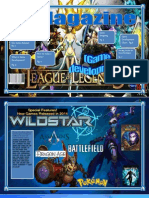Direct Payment
• The direct payment model, in which players simply purchase a game, either
as a whole or over time, is the oldest.
• With retail sales or digital distribution, players simply buy your game
outright.
Three other approaches are
• subscription-based sales (players subscribe to your game as a service rather
than buying it as a product),
• episodic delivery (players buy episodes of your game as they become
available)
• crowdfunding (players pay for your game in advance as a way of funding its
development).
�Retail Sales
• The traditional distribution and sales model for video games is the retail
model
• it is in decline for PC games, it remains strong for console games. It’s not
used for mobile phone games at all, although it is for dedicated handhelds
• Occasions and festivals like Christmas.
• This model works well for large studios making large games, but not for
small independents because they have limited access to shelf space and
marketing.
• The key drawback to retail sales is that you must have a publisher or
distributor to get your game onto the store shelves.
�• Normally a publisher will either develop a game in-house or will contract with a development
studio to develop it for them.
• The marketing for retail games can easily cost three to ten times as much as the development
costs.
• Many games don’t turn a profit, so the hit games subsidize the others
• Publishers almost never accept submissions from people they’ve never heard of; even more
important to them than the quality of the game idea is the reliability of the developer
• If it’s a console or dedicated handheld game, the hardware company (Nintendo, Sony, and so
on) does the manufacturing at a large price per disk or cartridge, which is how those
companies make most of their money. If it’s a PC game, the manufacturing is fairly inexpensive.
• In the retail sales model, the publisher sells the game at wholesale to the retailer.
• If a publisher is financing your company to build a game for them, even if the game was
originally your idea, you can expect them to want a lot of input into its design.
�Digital Distribution
• Distributing games electronically over the Internet gets rid of inventory risk and
cuts out the retailers, which offers game developers (and publishers, if there is a
publisher) far more freedom and flexibility.
• No retailer
• For example, if you sell a game on Steam, the Apple App Store, or Xbox Live
Marketplace, those organizations will take a certain amount per copy sold.
• 30% for hosting and 70% for development
• First Disadvantage , if there is no publisher, you have to market the game
yourself, and as we have already seen, the marketing can be extremely
expensive.
• The second disadvantage is that the prices are far lower
�Subscriptions
• In the subscription model, players pay you a fee, usually monthly, for
access to games that you provide via your own servers.
• But replaced by indirect payment methods.
• Subscription models obviously make sense only if you are selling access
to game content that changes periodically, or to a game that works
more as an ongoing service than as a single entertainment experience
(such as an adventure game).
• Subscription-based games need access to a server to be played.
• The subscription model actively discourages some players, who don’t
like the idea of having to continue to pay again and again to play a game
�Episodic Delivery
• Many developers have expressed an interest in trying to find a way to deliver
game software in episodes, like a television show.
• Instead of paying every month as with a subscription, customers pay for each
new episode as it becomes available
• Majestic, Kentucky Route Zero, and The Walking Dead are all episodic games
• Episodic games are not the same as sequels in a franchise
• Episodic games, by contrast, are really one big game distributed in pieces over
time (although they sometimes include technology updates as well).
• As you make and release only one episode at a time, the game gets quickly to
market and you can benefit from consumer feedback about one episode before
you begin the next one
�• Episodic delivery allows you to charge the player a smaller price per episode than
a full online sale would cost, which makes the game more attractive to players
• If the game is entertaining enough, this builds customer loyalty and encourages
them to continue buying episodes, which means they can end up spending more
than they ordinarily would on a single sale
• The disadvantages of episodic delivery are that you still have to have all the core
mechanics and user interface (UI) software written prior to delivering the first
episode, which can be expensive.
• As a designer, delivering your game episodically means that it must be designed to
be episodic in the first place.
• This works well for games with stories, but less well for games that cannot easily
be broken up into episodes, such as sandbox games or sports games.
�Crowdfunding
• You don’t necessarily have to wait until your game is finished to get money for it; you can fund its
development by asking people to pay you in advance, a process called crowdfunding
• Kickstarter and Indiegogo are the two best-known examples.
• The Double Fine studio asked for $400,000 and got $3,336,371 for a new game, which caused game
developers to take this model seriously for the first time
• You will need to create high-quality videos of your work and to give regular updates to your funders.
• It works best for people who already have a positive reputation in the industry.
• Most crowdfunding is not a form of investment, but simply a form of pre-ordering: Players get a
copy of the game once it comes out, along with extras if they pay more.
• . Naturally, your game must sound exciting to your potential donors, but you are free of pressures
from publishers and retailers because you deliver the game directly to the people who gave you
money.
• . This model is particularly popular with developers with niche market projects who don’t
necessarily want to reach the widest population possible, but to target dedicated fans.
�Indirect Payments
• By allowing them to pay a little at a time, or only for the parts of the
game that they want to pay for, we make it easier to attract them to
our games. However, most of these models work only with games
that are delivered online, either with a continuous or a periodic
connection to a server operated by the development company.
�Freemium Games
• In the freemium (free+premium) model, a business gives away a partially functional version of its software
but allows customers to purchase upgrades that render it more useful.
• The first products to be widely successful under the freemium model were antivirus suites.
• In the case of games, you give away the game but offer premium items for sale within the game (called in-
app purchases or IAPs) that make the game more fun or interesting.
• This usually takes the form of downloadable content (DLC).
• Downloadable content can consist of all kinds of things: extra levels, new clothing for an avatar character,
additional game modes, and new objects in the game, such as weapons or powerups.
• Dance games often offer additional music as downloadable content, which helps to keep the experience
fresh if the players are getting tired of the music that came with the original game.
• The chief criticism of the freemium model, from a player’s perspective, occurs when the game isn’t any
fun without buying the premium content
• The freemium model affects game design because rather than designing one single experience, you have
to design an experience that can be upgraded through purchases—and you have to make sure that these
purchases are desirable enough that you can earn a living from your game
�Free-to-Play
• In free-to-play games, players get a version of the game that is free but is designed to
encourage them to pay a subscription or some other kind of fee
• A common design allows players to play completely free of charge forever, but advancement
in the game is very slow, and players must log off periodically and come back later to
continue. Paying a fee removes this limitation.
• Another approach puts free players on one set of servers and paying players on another. The
servers for paying players are much less crowded, so the player experiences better
performance from the game.
• Many free-to-play games are designed to offer the player a small amount of advancement in
the game at frequent intervals in response to fairly trivial player activities—sometimes this
means the player doesn’t have to do anything more than click a button to advance, as in
Mafia Wars.
• The free-to-play model is closely related to the freemium model, and many free-to-play
games also include premiums that players can buy
�Advertising and Sponsorships
• You can earn revenue by selling advertising alongside your game. Advertising that
appears beside your game on the player’s screen does not intrude too much, and
you earn money for each person who sees, or clicks on, one of the ads
• This model is normally used for online games and, if successful, can even enable
you to give away the game for free and make all the money from the ads.
• Example facebook games and yahoo games
• Some developers also sell an ad-free version of the same game to players who
don’t like the advertisements and are willing to pay not to see them.
• You can also have advertisements appear within your game; you do this by selling
sponsorships to companies that want to have their message in your game world.
�• If your game is a standalone game sold at retail or online, the sponsor
simply pays you based on the number of copies that you sell; if the
game is an online game delivered via a server, they will pay you per
view or per click as is done when the advertising appears alongside
the game.
• Sponsorships are most common in sports games and vehicle
simulations that emulate a real-world sport or car race.
• The design implications of advertising, and especially of sponsorship,
are that your game content must not upset your sponsors
�Commissioned Games
• which you get paid to build a game for someone else, but you don’t
get any royalties for sales.
• The only money you see is what you get paid to build the game in the
first place, which means that you must build your profit margin into
the price you charge to do the work.
• For charity or government agency























































































